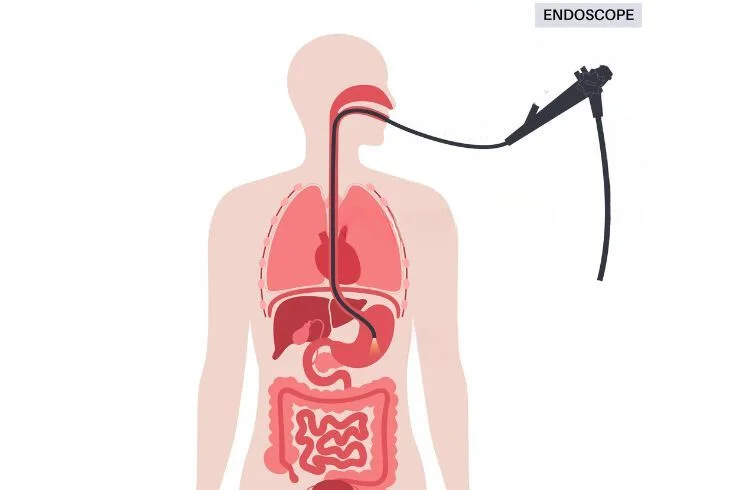
Endoscopy is a minimally invasive medical procedure that allows doctors to view and examine the inside of a patient’s body using an instrument called an endoscope. The endoscope is a long, thin, flexible tube with a camera and light at the end, which transmits real-time images to a monitor, enabling precise diagnosis of various conditions.
Endoscopy is commonly used to investigate symptoms affecting the digestive tract, such as persistent abdominal pain, chronic nausea, vomiting, difficulty swallowing, gastrointestinal bleeding, and changes in bowel habits. It can help diagnose a range of conditions, including ulcers, inflammation, tumors, blockages, and other abnormalities in the esophagus, stomach, small intestine, and colon.
There are various types of endoscopy based on the area being examined. Upper endoscopy, or esophagogastroduodenoscopy (EGD), allows the doctor to view the upper digestive tract, while colonoscopy and sigmoidoscopy focus on the lower digestive tract. Endoscopy can also be used for biopsy, allowing tissue samples to be collected for further testing, aiding in the diagnosis of cancers or infections.
In addition to diagnosis, endoscopy can be therapeutic, enabling the removal of polyps, treatment of bleeding sites, or dilation of narrowed areas in the gastrointestinal tract. The procedure is generally safe and well-tolerated, requiring only light sedation in most cases.
Endoscopy is an essential tool for early diagnosis, allowing many conditions to be detected before symptoms become severe, leading to more effective treatment and better patient outcomes. Its minimally invasive nature ensures quicker recovery and reduced risk compared to traditional surgeries.